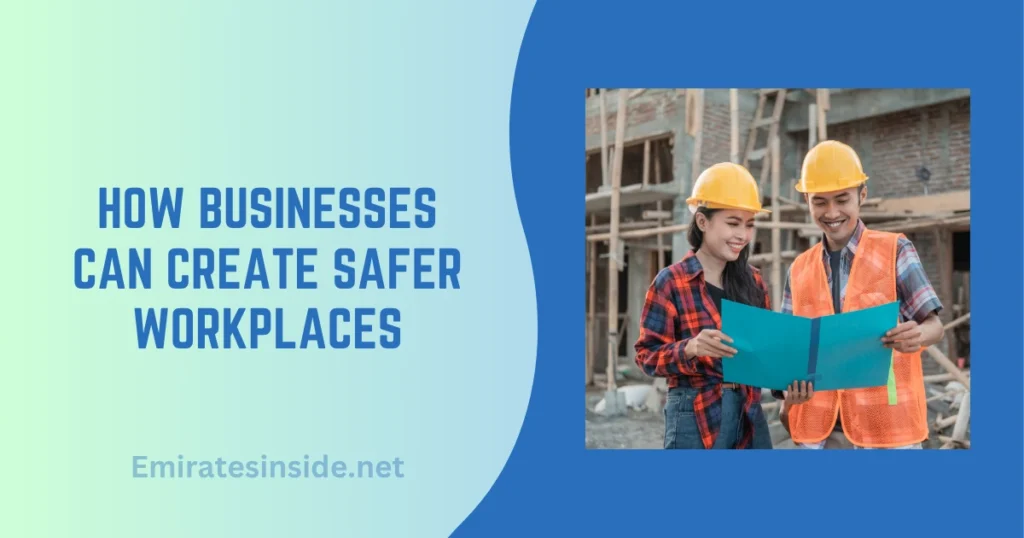How Businesses Can Create Safer Workplaces
Workplace safety is a core value for organizations, leading to reduced absenteeism, lower turnover rates, and enhanced employee trust. This approach, involving training, technology, transparency, audits, and mental health support, fosters a sense of belonging and investment in the business’s success, boosting its reputation and recruiting potential.
Establishing a safe workplace is vital not just for the physical protection of employees but also for a business’s overall success and sustainability. A robust workplace safety program is the bedrock for increasing morale, safeguarding assets, ensuring legal compliance, and promoting an environment where employees feel appreciated and secure. Proactively protecting workers from potential harm doesn’t just prevent injuries or illnesses—it reduces costly downtime, minimizes insurance expenses, and fortifies the organization’s reputation as a responsible employer. For California employers in particular, understanding the nuances and requirements of workers’ compensation insurance at https://www.adp.com/resources/articles-and-insights/articles/w/workers-compensation-insurance-california.aspx is a critical step in maintaining legal compliance and providing peace of mind for both workers and owners. Coupled with comprehensive efforts to anticipate and prevent risks, investing in a safety-first mindset strengthens the workforce and the organization’s bottom line.

Comprehensive Safety Training Programs
Effective workplace safety strategies require well-structured, comprehensive training addressing the unique risks of each job type. Businesses should design customized programs that emphasize practical knowledge and address the unique hazards associated with each role. Interactive learning methods, such as hands-on practice, scenario-based workshops, group exercises, and digital simulations, help employees understand, retain, and utilize key safety concepts. Consistently offering refresher courses and evolving training in line with new technologies or operational changes further equips the workforce to handle emerging threats confidently and competently.
Role-specific training is essential for employees with inherent risks, such as heavy machinery operation, lockout/tagout protocols, and proper use of protective gear. Implementing training programs specific to each role ensures that every employee has the knowledge to identify hazards early and respond appropriately. Communicating expectations, responsibilities, and points of contact for safety matters ensures everyone knows how to act swiftly in an emergency.
Building employee engagement is crucial for implementing safety training. Interactive elements, such as realistic drills, open forums, and scenario-based discussions, make abstract safety protocols tangible and memorable. Businesses can fuel participation by recognizing achievements in safety training through public acclaim, certificates, or small rewards, encouraging employees to treat safety protocols as a meaningful part of their daily work and professional development.

Leveraging Technology for Safety
Workplace technology has significantly improved safety measures for companies. Wearable devices, such as smart helmets, vests, and wristbands, can monitor vital signs, detect hazardous chemicals, and issue alerts if a worker is in danger or displays signs of stress or fatigue. This real-time data allows managers and health and safety teams to intervene early and prevent unsafe conditions from escalating. The technology also provides insight into environmental risks and employee well-being.
Automated detection and alerts enhance workplace safety by providing early warning systems that detect atmospheric changes, machinery malfunctions, or unauthorized access points. These systems reduce error rates and enable swift responses to crises. Integrating advanced sensors, cloud data platforms, and mobile applications simplifies compliance and reporting while providing valuable analytics for ongoing safety improvements.
Virtual reality (VR) for training is a transformative approach to safety education, especially in high-risk environments. VR simulations allow employees to experience hazardous situations in a controlled, virtual setting, building essential skills and sharpening decision-making under duress. This immersive learning results in higher knowledge retention and builds confidence in safety processes before real-world emergencies.
Fostering a Culture of Safety
Workplace safety should be a defining aspect of organizational culture, starting at the top. Businesses can inspire greater buy-in across all levels by actively modeling workplace safety and valuing employee input. Building a safety culture requires trust and transparency, empowering employees to report hazards, ask questions, and take ownership of safety issues without fear of blame or retaliation. This results in sustained safety performance and collective pride.
Open communication channels are vital for early risk identification and prevention, ensuring every employee’s voice is heard. Establishing multiple avenues for reporting, such as digital reporting systems, anonymous suggestion boxes, or regular safety meetings, fosters a blame-free, solution-focused dialogue. This openness builds mutual trust between management and workers, essential for a healthy safety culture.
Recognizing and celebrating positive safety practices not only motivates those being recognized but also creates visible role models for others. Regularly highlighting teams or individuals who demonstrate exceptional commitment to safety sends a clear message about the value placed on preventive action, reinforcing a sense of community and collective responsibility.
Conducting Regular Safety Audits
Regularly evaluating a company’s safety policies is crucial for identifying potential hazards before they cause harm. Scheduled safety audits, which should be thorough and actionable, help organizations catch potential dangers before they cause damage. Employee involvement at every level in the audit process is essential for creating a realistic assessment of workplace risks. Workers are often the first to notice unsafe conditions or inefficient processes, and their involvement fosters accountability, generates practical solutions, and enhances commitment to continuous improvement. Ergonomic assessments are crucial for identifying common workplace hazards like physical strain and repetitive motion injuries. These assessments scrutinize workstations, tools, and production workflows to ensure they support healthy movement and minimize stress. Implementing ergonomic improvements, such as height-adjustable desks, supportive seating, and properly designed equipment, improves comfort and productivity, reducing the risk of long-term injuries and absenteeism.
Prioritizing Mental Health
Mental health challenges can significantly impact workplace safety, as chronic stress, anxiety, and burnout can erode cognitive function and increase the likelihood of mistakes or accidents. Organizations should prioritize mental health by offering resources like counseling services, mental wellness workshops, and flexible leave policies. This not only prevents safety lapses but also improves retention and employee satisfaction. A healthy work-life balance is crucial for protecting both mental and physical safety. Encouraging regular breaks, flexible schedules, and clear boundaries between work and personal time helps employees recharge and reduces exhaustion. Regular well-being check-ins, workshops, and awareness campaigns demonstrate an organization’s care for employees beyond their daily output. By combining dynamic training, cutting-edge technology, a safety culture, rigorous audits, and mental health initiatives, businesses can create safer workplaces where employees thrive, drive productivity, reduce liability, and build positive relationships with staff and communities.





